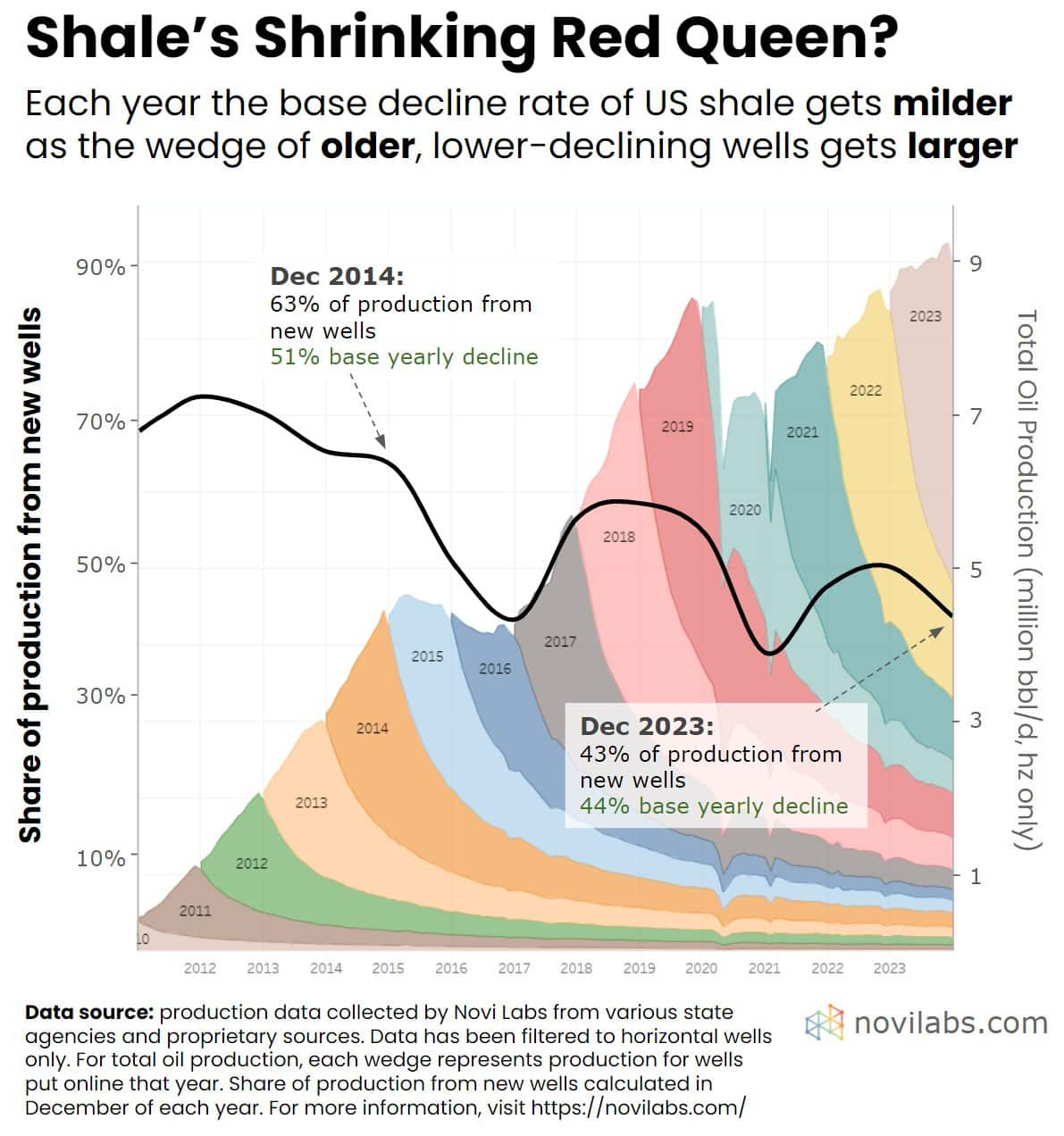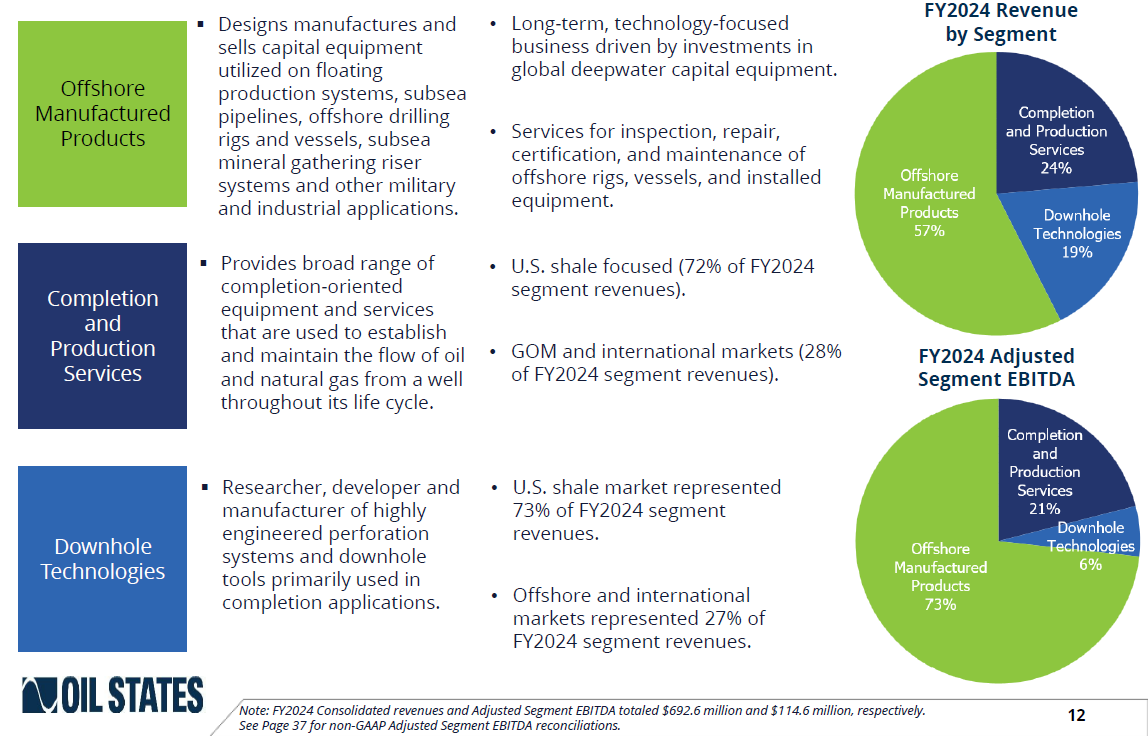Every once in a while a signal flashes too brightly to ignore. These last few days I’ve seen people make a clever twist on “drill baby, drill,” and are writing “drill maybe, drill.” I think that means it’s time to doublecheck my presuppositions, pinch my nose, and buy some oil services companies.
When Trump was first elected, WTI seemed relatively pinned at $70 a barrel. Now the US dollar index has fallen from 107 to 99, and WTI is down to $62 after briefly touching $55 intraday on April 9th. So oil is cheaper priced in dollars on a weaker dollar, that’s a double whammy. But the cure for low prices is low prices, and just today Matador Resources (MTDR) announced:
“"Finally, in response to recent commodity price volatility, Matador has decided to adjust its drilling and completion activity for 2025 to provide for more optionality. Matador began 2025 operating nine drilling rigs and now expects to drop to eight drilling rigs by the middle of 2025, which is made possible by the flexibility in its service contracts allowing for rapid reduction of operations.”
Does the global economy still run on oil? Even the IEA, which has consistently underestimated the growth in oil demand, projects an increase in oil consumption for 2025 over 2024.
And oil production declines naturally somewhere around 5% per year, with shale declining over 20% per year. Shale technology has improved, and the decline rates, while still enormous, are better than they were just a few years ago.
Oil is still a cyclical commodity with prices that are set at the margin, and the cure for low prices is low prices. Eventually enough supply will come offline until the marginal price pushes the average price into profitability, leading to a boom in the oilfields again. There will then be a multi-year chase where new production can’t seem to catch up, until the cycle turns once again.
What is less obvious is which company in the oil patch is the best bet. I don’t like owning the shale producers themselves, their inventory depletes rapidly, and I could always be wrong about the timing. If I were to buy a producer, I would want something with a slow rate of decline.
In the world of oilfield services, there are drillers onshore and offshore, frac fleets, sand mines, and even parts manufacturers. Today I want to dive into an oifield services parts manufacturer, Oil States International (OIS). What I like about little industrials is their relative stability compared to most other small caps. OIS has even been doing share buybacks in the last 12 months, and plans for more share buybacks in 2025.
OIS looks worse at first glance than it really is. Asset impairments and goodwill writedowns are driving GAAP net income into the negative, but those are non cash events. If you look past the non cash events, for the last three years, OIS has cash flow from operating activities of $32 million in 2022, $56 million in 2023, and $45 million in 2024. Some of that is redeployed into maintenance capex, but about $10 million of it has been used to retire debt and another $18 million has been used to buy back stock. For a $216 million market cap company, OIS isn’t exactly gushing cash, but can the next three years be worse than the last three?
Just over half of OIS’ business is providing equipment for the offshore oil services market, flexible bearings, connection systems, subsea pipeline parts, ball valves, manifold systems, marine winches, etc. Offshore has been in the doldrums since 2014. Prior to 2014, OIS consistently did about $2 billion of sales per year, but in recent times, that number has been closer to $700 million. The onshore part of the business is newer, some of it from the acquisitions of Flowback Services and GEODynamics in 2018. For the shale oil patch, OIS has crown valves and frac isolation tools, downhole phase gas separators, extended reach tools, shaped charges, perforating systems etc.
A lot of OIS’ offerings are proprietary and patented, although, many of their patents are reaching the 20 year expiration mark. It isn’t obvious how their market share will perform afterward, or if they have new research and development in the pipeline to replace the expiring patents. I chatted with some artificial intelligence platforms about it for a bit, but I have to chalk this one up to being a generalist investor that can’t pierce the veil of specialist knowledge. Still, in a Merger & Acquisition wave, I think odds are very good that OIS could be a juicy acquisition target once some of this tariff uncertainty is past.
If you have been following this substack, then you would know that I am bullish the offshore market. Offshore can provide heavy oil where shale only provides light oil. And the marginal cost per barrel offshore is often below $55 per barrel, compared to shale which is closer to $65 per barrel today. The big hangup is that offshore requires a much longer commitment and upfront cost, which the supermajors have been reluctant to deploy. The oil price will have to escape from the supply destruction price, and stay relatively high long enough for major offshore capex to arrive.
One area where I am not in agreement with OIS management is their projection about offshore wind. While the economics regarding solar panels aren’t terrible, unless you take the energy storage and redundancy requirements into account, the economics of offshore wind are a disaster. Even Elon Musk’s AI engine was gaslighting me on the economics of wind until I asked it to rank order countries by percentage of offshore wind generation and average cost of electricity. I do not believe that an offshore wind supercycle is just around the corner, but if you do, OIS does stand to benefit from their various subsea engineered products.
Of the part of the business that isn’t offshore, 72% of that is for shale. And as the shale revolution matures, it is using a lot more engineered inputs. What once required 1,250 perforating charges per well and 100 perforating guns per well now requires over 4,000 perforating charges per well and over 1,600 perforating guns per well. So even if the rig count and the frac fleet count stays subdued, there is room for an increased demand in shale engineered equipment. OIS manufactures the razor blades, and US shale is going through puberty.
I have been accused of loving levered shitcos too much, but OIS has a very manageable amount of long term debt, only about $120 million. Taking cash on hand into account, net debt was closer to $45 million as of the last earnings call in March. Management believes they can focus on returning capital to shareholders, and are not aggressively paying down debt.
Also, after the enormous setback in 2020, OIS management is claiming that they have returned to growth. This return to growth, however, is only true when you compare 2024 to 2020 and 2021, but it isn’t true if you compare 2024 to 2022 and 2023. This does make sense if you have been following frac fleets and rig counts, 2024 has been a surprisingly difficult year.
If any cyclical activity starts to turn in their favor, after a few years of growth, OIS can trade back to historical multiples. What is less clear is what kind of peak cycle revenue they can achieve since the dropoff in 2014. Will OIS have $2 billion in revenue again in a few years on the next boom? I have some doubts. But even a return to $1 billion in revenue combined with a return to a price to sales ratio of 1.0x would be a huge rerating. From 2013 to 2019, OIS traded between a price to sales ratio of 1.0x and 3.0x. If over the next three years, OIS does a few more share buybacks, returns to a price to sales ratio of 1.0x, and returns to $1 billion of revenues, that would imply a share price of around $17.24.
But again, it looks like we are entering into a Merger and Acquisition wave, and in that environment, OIS could likely be an acquisition target. Is the price so low that it couldn’t get cut in half before being acquired? I have seen plenty of companies fall from a price to sales of 0.31x to 0.15x, but they are usually much more levered. Management is guiding positively, and OIS’ backlog is somewhat robust although down a bit from 2023. My best guess is that the stock doesn’t have much farther to fall, but I have been wrong before.
Oil States International (OIS) $3.52: $17.24 by the end of year 2028.










"Over levered shitcos" I like it!
Did you ever check $GMS.L?